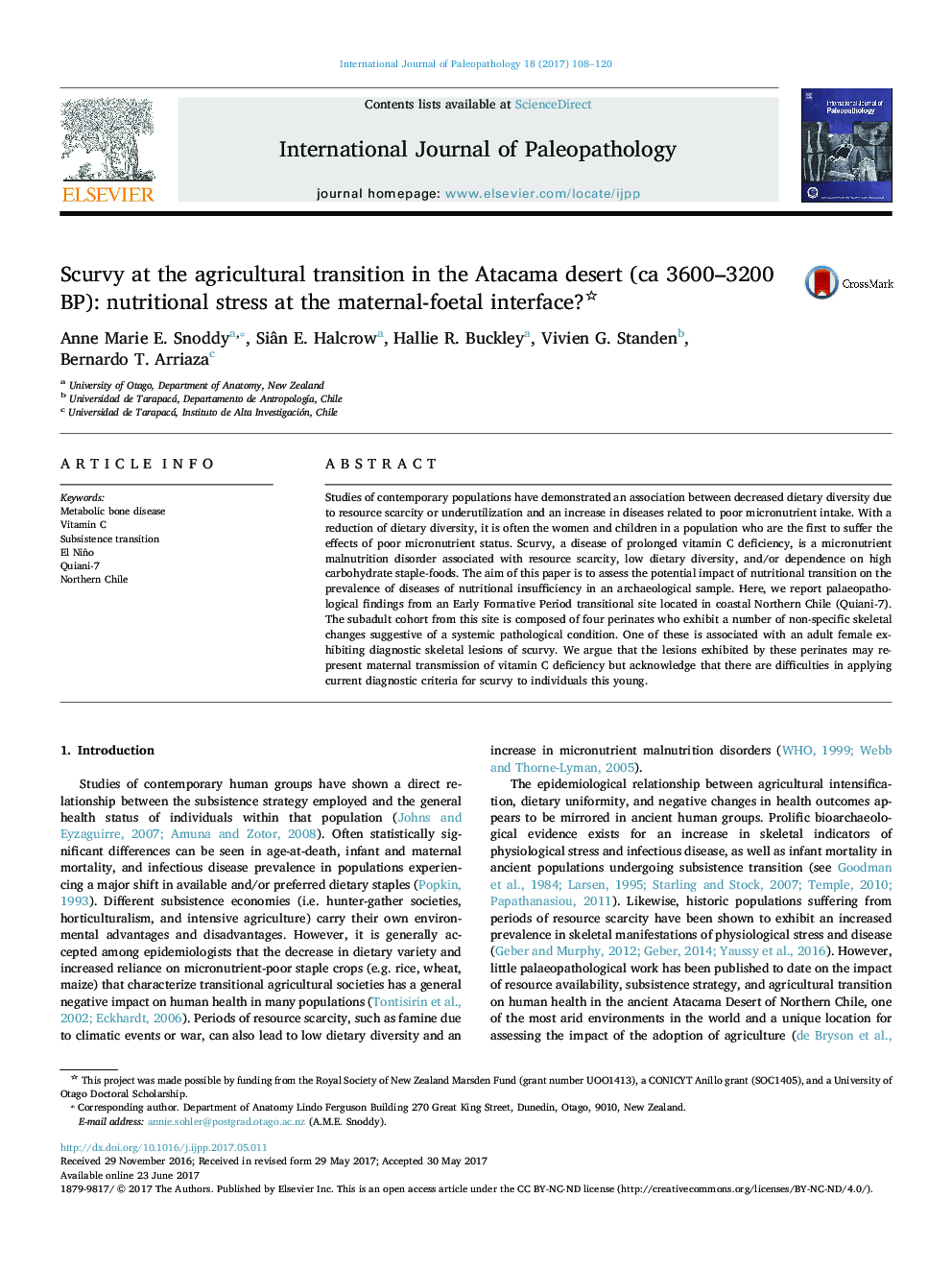| Article ID | Journal | Published Year | Pages | File Type |
|---|---|---|---|---|
| 6463044 | International Journal of Paleopathology | 2017 | 13 Pages |
Studies of contemporary populations have demonstrated an association between decreased dietary diversity due to resource scarcity or underutilization and an increase in diseases related to poor micronutrient intake. With a reduction of dietary diversity, it is often the women and children in a population who are the first to suffer the effects of poor micronutrient status. Scurvy, a disease of prolonged vitamin C deficiency, is a micronutrient malnutrition disorder associated with resource scarcity, low dietary diversity, and/or dependence on high carbohydrate staple-foods. The aim of this paper is to assess the potential impact of nutritional transition on the prevalence of diseases of nutritional insufficiency in an archaeological sample. Here, we report palaeopathological findings from an Early Formative Period transitional site located in coastal Northern Chile (Quiani-7). The subadult cohort from this site is composed of four perinates who exhibit a number of non-specific skeletal changes suggestive of a systemic pathological condition. One of these is associated with an adult female exhibiting diagnostic skeletal lesions of scurvy. We argue that the lesions exhibited by these perinates may represent maternal transmission of vitamin C deficiency but acknowledge that there are difficulties in applying current diagnostic criteria for scurvy to individuals this young.
